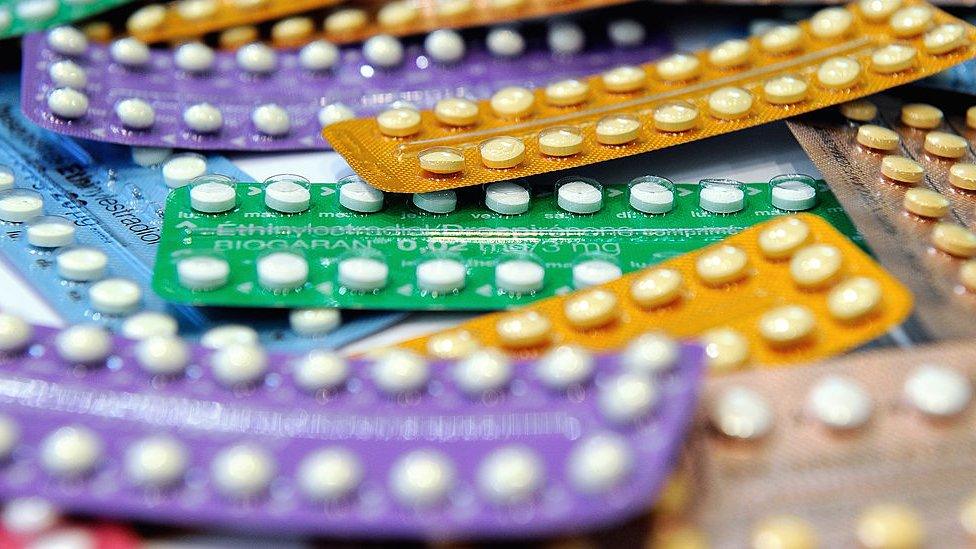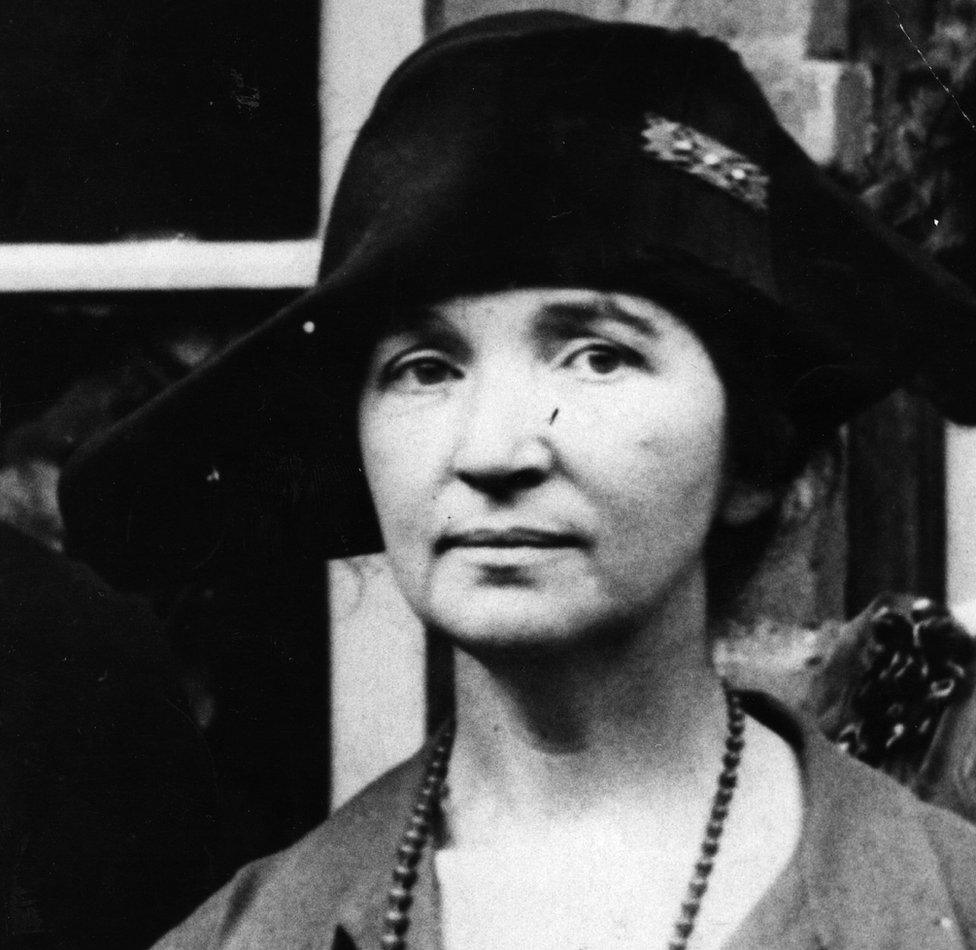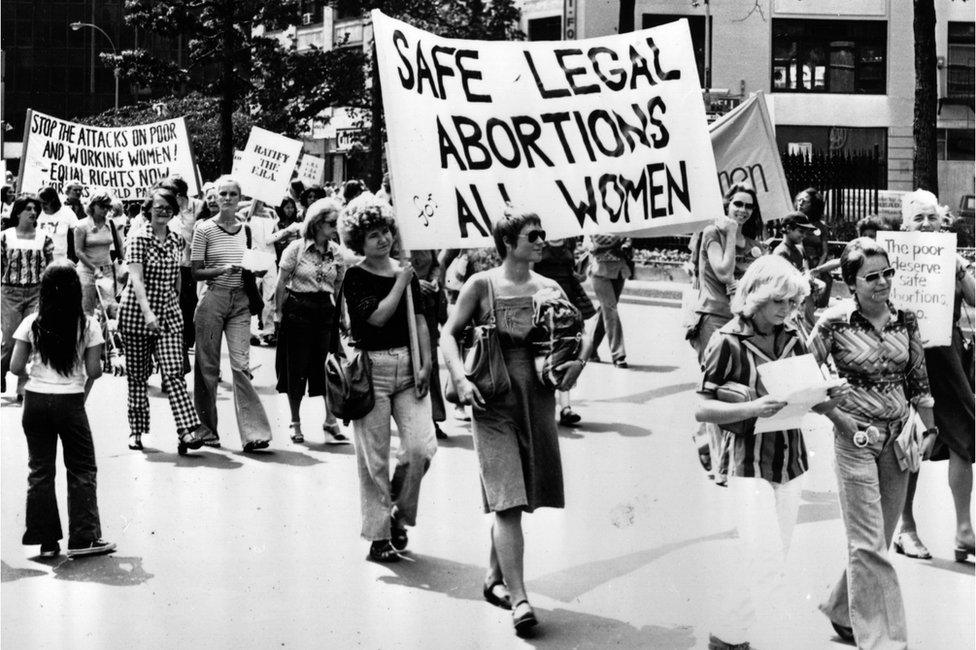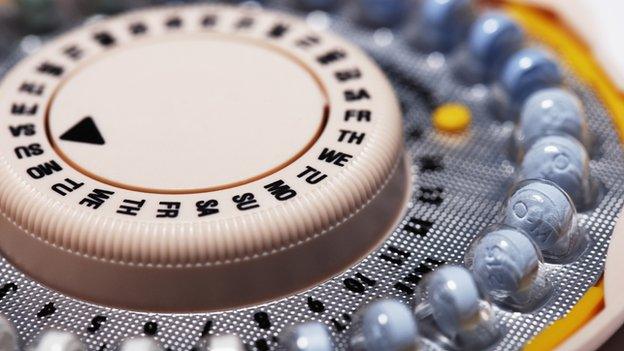The tiny pill which gave birth to an economic revolution
- Published

The contraceptive pill had profound social consequences. Everyone agrees with that.
In fact, that was the point. Margaret Sanger, the birth control activist who urged scientists to develop it, wanted to liberate women sexually and socially, to put them on a more equal footing with men.
But the pill wasn't just socially revolutionary. It also sparked an economic revolution - perhaps the most significant economic change of the late 20th Century.


50 Things That Made the Modern Economy highlights the inventions, ideas and innovations which have helped create the economic world in which we live.
It is broadcast on the BBC World Service. You can find more information about the programme's sources and listen online or subscribe to the programme podcast.

To see why, first consider what the pill offered to women. For a start, it worked - unlike many of the other options.
Over the centuries, lovers have tried all kinds of unappealing tricks to prevent pregnancy. There was crocodile dung in ancient Egypt, Aristotle's recommendation of cedar oil, and Casanova's method of using half a lemon as a cervical cap.
But even the obvious modern alternative to the pill - condoms - have a failure rate.

Margaret Sanger opened the first US family planning centre in New York in 1916, when contraception and abortion were illegal
Because people don't tend to use them exactly as they're supposed to, they sometimes rip or slip. So for every 100 sexually active women using condoms for a year, 18 will become pregnant. The failure rate of the sponge is similar. The diaphragm isn't much better.
But the failure rate of the pill - with typical use - is just 6%, three times safer than condoms. Used perfectly, the failure rate drops to one twentieth of that.
Economic revolution
Using a condom meant negotiating with a partner. The diaphragm and sponge were messy. But the decision to use the pill was a woman's, and it was private and discreet. No wonder women wanted it.
The pill was first approved in the United States in 1960. In just five years, almost half of married women on birth control were using it.
But the real revolution would come when unmarried women got access to oral contraceptives. That took time. But in around 1970 - 10 years after the pill was first approved - US state after US state started to make it easier for single women to get the pill.
Universities opened family planning centres. By the mid-1970s, the pill was overwhelmingly the most popular form of contraception for 18 and 19-year-old women in the US.

The Planned Parenthood organisation distributed information and contraception across the US
And that was when the economic revolution really began.
Women in America started studying particular kinds of degrees - law, medicine, dentistry and MBAs - which had previously been very masculine.
In 1970, medical degrees were over 90% male. Law degrees and MBAs were over 95% male. Dentistry degrees were 99% male. But at the beginning of the 1970s - equipped with the pill - women surged into all these courses. At first, women made up a fifth of the class, then a quarter. By 1980 they often made up a third.
This wasn't simply because women became more likely to go to university.
Professional progress
Women who'd already decided to be students opted for these professional courses.
The proportion of female students studying subjects such as medicine and law rose dramatically, and logically enough, the presence of women in the professions rose sharply shortly afterwards.
But what did this have to do with the pill? By giving women control over their fertility, it allowed them to invest in their careers.

These Harvard graduates could take for granted the freedom to develop their careers before having children, if they wished
Before the pill was available, taking five years or more to qualify as a doctor or lawyer didn't look like a good use of time and money. To reap the benefits of those courses, a woman would need to be able to reliably delay motherhood until she was 30 at least.
Having a baby at the wrong time risked derailing her studies or delaying her professional progress.
A sexually active woman who tried to become a doctor, dentist or lawyer was doing the equivalent of building a factory in an earthquake zone: just one bit of bad luck and the expensive investment would be trashed.
Marriage moratorium
Of course, women could simply abstain from sex if they wanted to study for a professional career. But many didn't want to.
And it wasn't just about having fun. It was also about finding a husband. Before the pill, people married young. A woman who decided to abstain from sex while developing her career might try to find a husband at the age of 30 and find that, quite literally, all the good men had been taken.
The pill changed both those dynamics. It meant that unmarried women could have sex with substantially less risk of an unwanted pregnancy.
But it also changed the whole pattern of marriage. Everyone started to marry later, even women who didn't use the pill.

The 1973 landmark Roe v Wade case legalised abortion in the US, allowing women further control over their fertility
Babies started to arrive later, and at a time of women's own choosing. And that meant that women, at least, had time to establish a professional career.
Of course, many other things changed for American women in the 1970s.
Earnings boost
Abortion was legalised, laws against sex discrimination were put in place, feminism emerged as a movement, and the drafting of young men to fight in Vietnam forced employers to recruit more women.
But a careful statistical study by the Harvard economists Claudia Goldin and Lawrence Katz, external strongly suggests that the pill must have played a major role in allowing women to delay marriage and motherhood, and invest in their own careers.
Goldin and Katz tracked the availability of the pill to young women in the US, state by state. They show that as each state opened up access to contraception, so the enrolment rate in professional courses soared, and so did women's wages.

More from Tim Harford

A few years ago, the economist Amalia Miller used a variety of clever statistical methods, external to demonstrate that if a woman in her 20s was able to delay motherhood by one year, her lifetime earnings would rise by 10%.
That was some measure of the vast advantage to a woman of completing her studies and securing her career before having children.
Alternative reality
But the young women of the 1970s didn't need to see Amalia Miller's research: they already knew it was true.
As the pill became available, they signed up for long professional courses in undreamt of numbers.
American women today can look across the Pacific Ocean for a vision of an alternative reality.

Did the lack of widely available contraception contribute to Japan's gender inequality?
In Japan, one of the world's most technologically advanced societies, the pill wasn't approved for use until 1999. Japanese women had to wait 39 years longer than their American counterparts for the same contraceptive.
In contrast, when the erection-boosting drug Viagra was approved in the US, Japan was just a few months behind.
Gender inequality in Japan is widely reckoned to be worse than anywhere else in the developed world, with women continuing to struggle for recognition in the workplace.
It is impossible to disentangle cause and effect here, but the experience in the US suggests that it is no coincidence. Delay the pill by two generations, and of course the economic impact on women will be enormous.
It is a tiny little pill that continues to transform the world economy.
Tim Harford writes the Financial Times's Undercover Economist column. 50 Things That Made the Modern Economy is broadcast on the BBC World Service. You can find more information about the programme's sources and listen online or subscribe to the programme podcast.
- Published25 September 2015

- Published11 January 2017

- Published12 December 2016

- Published18 September 2014

- Published4 December 2011
